- I’ve Got the Best Kegerator Cabinet Ideas for Any Home Bar - November 24, 2022
- How to Find the Best Brew Kettle for Home Brewing - November 19, 2022
- How to Find the Best Beer Still for Home Brewing - July 6, 2022
Have you ever considered brewing your own beer at home but were intimidated by pieces of equipment such as the nitrogen regulator? Don’t worry, In this guide, we’re here to show you that there isn’t that much brewing science behind it, so we’ve gathered the best nitrogen gas regulators for brewing on the market and explained what they have to offer in terms of components and ease of use.
What Is a Nitrogen Regulator?
A regulator is a device that links an air tube with a gas recipient, in order to create a compressed air system. When it comes to kegerators, the regulator is one of the most significant components since it regulates CO2 flow. It is through the regulator that you can adjust the pressure to the desired level.
How Does a Nitrogen Regulator Work?
Nitrogenated beer is conditioned and served at pressures that are higher than those found in standard kegs. When the beer is driven past a restrictor plate in the brewing faucet, the pressure is higher than normal, resulting in the development of very minute bubbles.
A CO2 gas alone would be ineffective in this process because the CO2 would rapidly dissolve into solution and trigger an over-carbonation disaster that would be catastrophic in nature. Nitrogen, in contrast to carbon dioxide, is exceedingly resistive to being dissolved in water (tt is only approximately one-tenth as soluble as carbon dioxide).
As a result, a mixture of 75 percent nitrogen and 25 percent CO2 is employed to achieve high pressure in the keg while also maintaining low carbonation in the beer
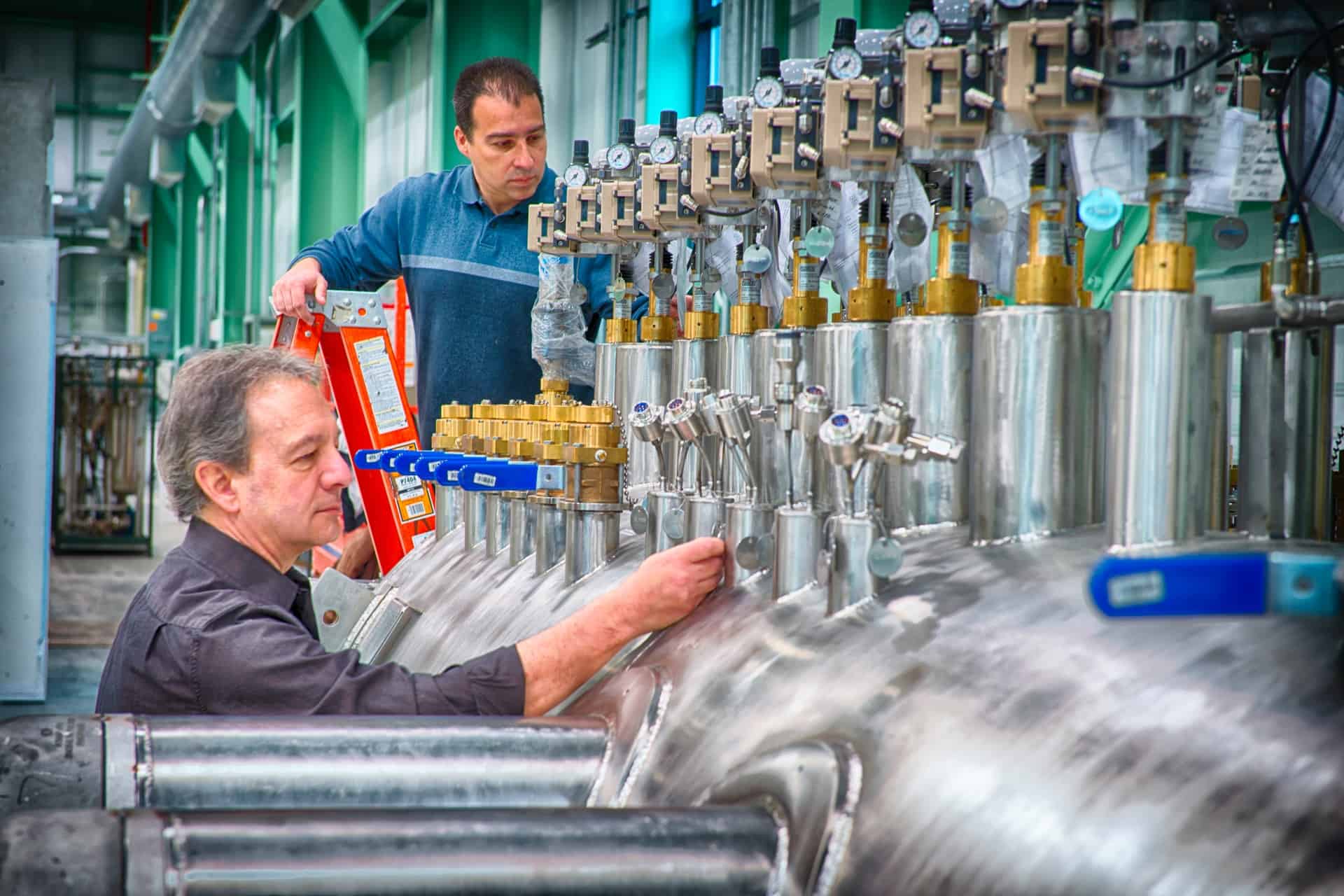
Do I Need a Nitrogen Regulator for Brewing Beer?
If you want to make dark beers, malty beers, beers with little hop aroma, or brew served with low carbonation levels, then you need a nitrogen regulator. Of course, you don’t need it to make beer, but if you want to enjoy a high quality keg brewsky, it’s worth investing in this particular type of regulator. It’s a vital addition to your home brewing equipment.
Parts of a Nitrogen Regulator
In order to better understand the type of equipment you’re working with, we thought it might be useful to break down the nitrogen regulator into parts and explain what each of them does and how it works as a piece of the puzzle.
Low pressure gauge
Low pressure gauges are useful for the measurement of liquid and gaseous pressures, provided that they do not interfere with the device’s operation. In this particular situation, they will measure the gas pressure as it goes inside your keg.
High pressure gauge
The use of the proper high pressure gauge allows for the most accurate measurement of both high and low pressure. You can carry out a pressure measurement with the well-founded numbers you’ve obtained. However, in the case of a keg, this gauge will show you the amount of gas that remains inside the tank.
Outlet fitting
The regulator and the airline from your keg need to be connected, and the outlet fitting is here to make it happen. These fittings are located on the bottom side of the regulator and are meant to create a tight seal.
Pressure release valve
The role of the pressure release valve is to eliminate any potential pressure build-up inside the system, allowing you to better adjust the pressure using the dial located on your regulator.
Shut off valve
Basically acting as a power button, the shut off valve has the primary role to open and close the gas flow that travels from the tank to the nitrogen regulator. The default position for an open flow is parallel to the gas line, so if the valve is perpendicular to the line, which means it’s turned off.
Pressure adjustment
The pressure adjustment looks like a large screw (but can also be in the shape of a dial) that’s located on the front side of the regulator. With this dial, you will be able to adjust the pressure on your regulator. Note that, depending on the model, you might need a tool to operate this part.
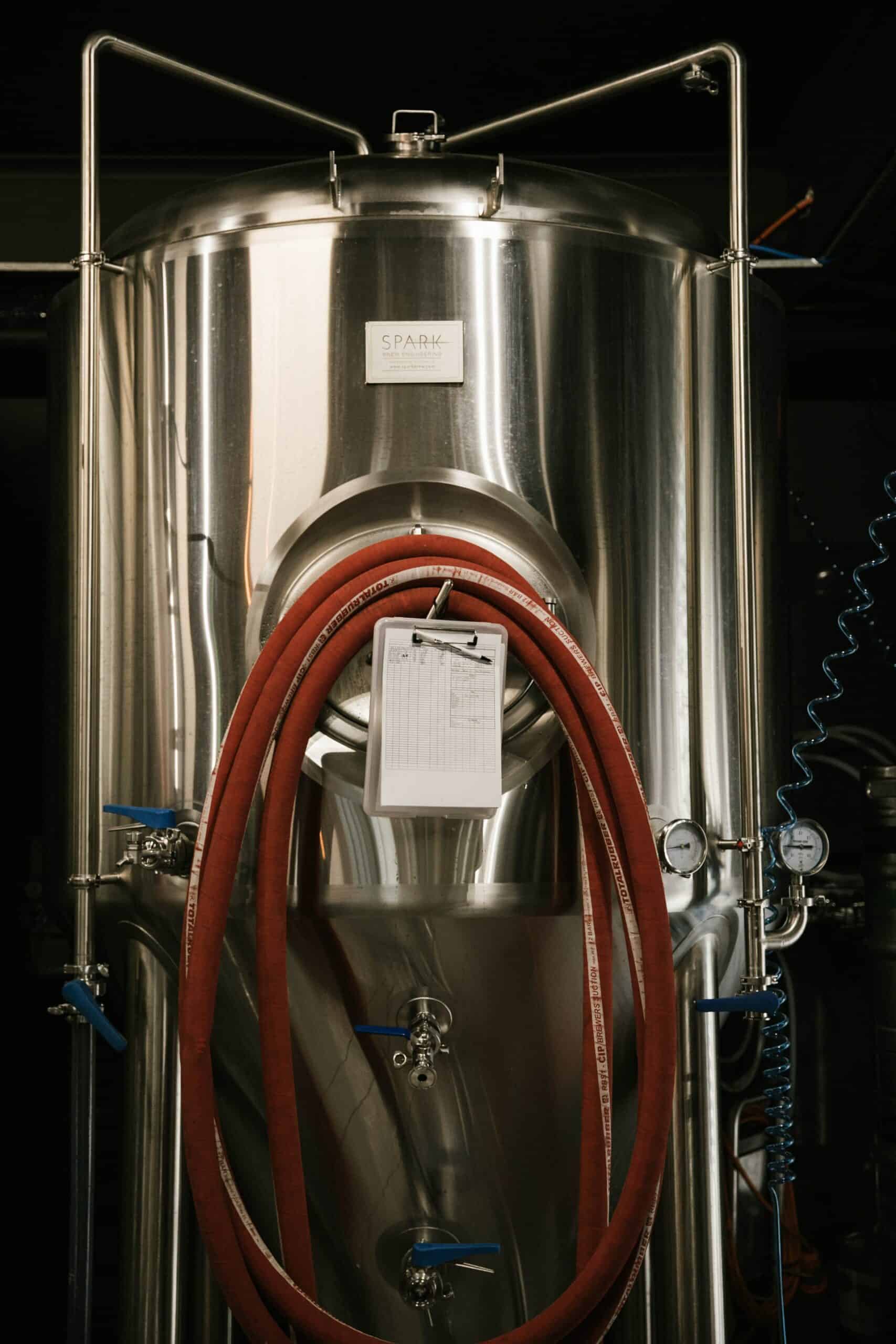
Double Nitrogen Regulator VS Single Nitrogen Regulator
When shopping for regulators, you’ll come across two different types: single and double stage regulators.
The air pressure is regulated by single-stage regulators in, obviously, a single stage. They are less expensive, but because delivery pressure is not always uniform, they have a wider margin of error.
Regulations that operate in two stages are called “two-stage regulators.” A two-stage process is used to adjust gas pressure. A factory-set pressure is used in the first stage, and it cannot be changed. The second regulator is the only one that can be adjusted.
Nitrogen regulators with two stages provide greater precision and consistency when it comes to delivering pressure. They are capable of maintaining the delivery pressure even when the inlet pressure fluctuates.
When it comes to high-pressure applications, two-stage regulators are appropriate because they can maintain delivery pressure while staying within a narrow margin.
Nitrogen Regulator VS CO2 Regulator
You’re probably wondering if you can use a CO2 regulator as a nitrogen one. The truth is that you can’t, simply because nitrogen regulators operate at higher pressures and are designed differently. Their unique characteristics make them irreplaceable. The nitrogen regulator is different from a CO2 regulator in that it attaches to the tank via a female stem piece.
The CO2 regulator’s primary function is to allow you to regulate the amount of gas that flows from the tank into your beer through the keg. Hundreds of pounds per square inch of pressure is exerted on the CO2 in your gas cylinder by your regulator.
Consequently, the pressure that comes out of the tank must be controlled, which is exactly what the regulator does. Because of the spring and the diaphragm contained within the regulator body, the majority of the pressure that comes out of the tank will be alleviated.
This manner, you have complete control over the pressure that comes out of the regulator and goes into your brew. A screw device is located on the front of the regulator body and is used to adjust as needed.
How to Use a Nitrogen Regulator
Using a nitrogen regulator is mostly a matter of adjusting the pressure. In order to do that, you have to locate the screw which is placed on the front of the regulator and turn it clockwise to increase the pressure and counterclockwise to decrease it.
The gauge located on the top will show you the current pressure status. There is a pressure relief valve on the top of the regulator. You might have to flip it in order to release any excess pressure already built up in the line.
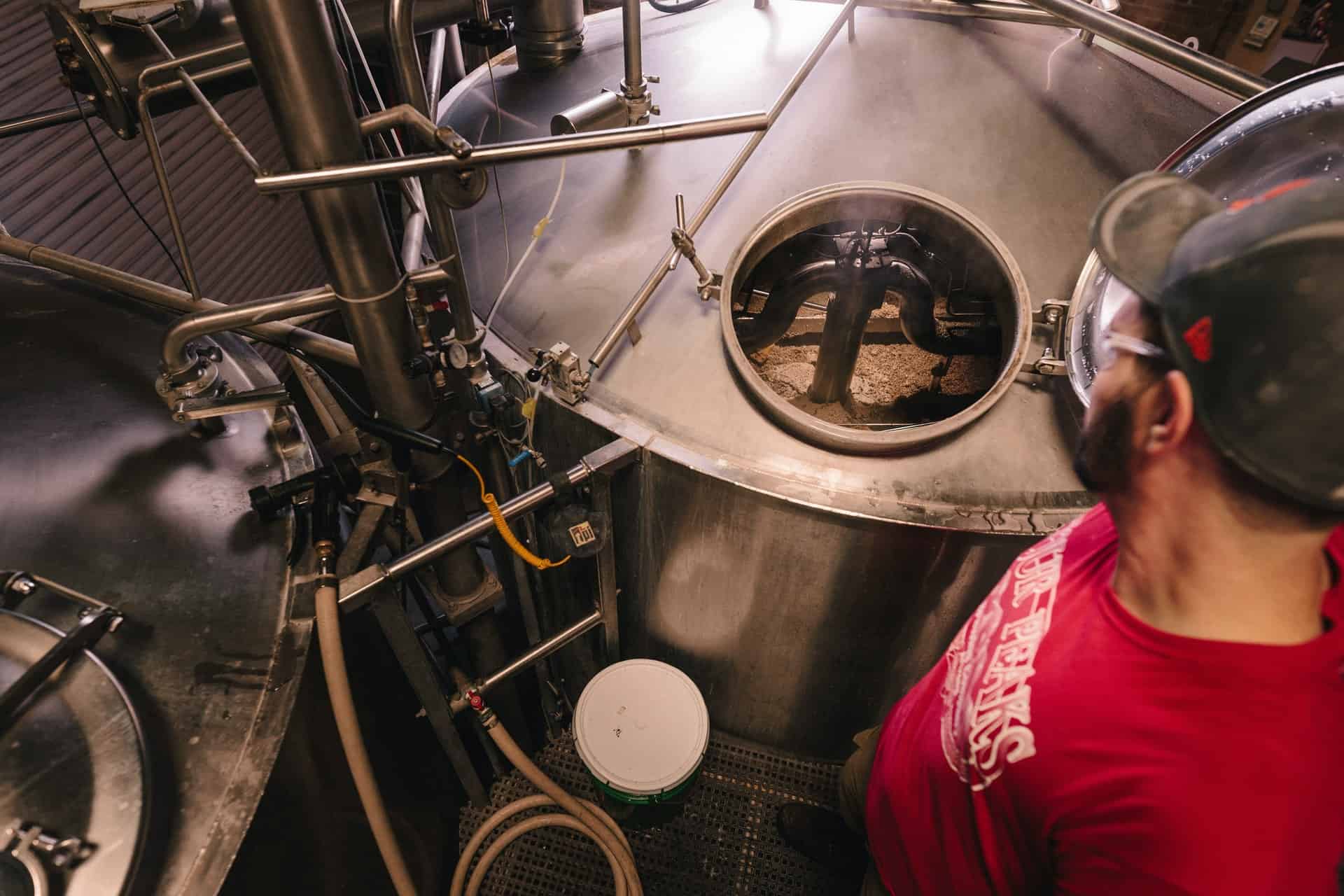
Possible Troubleshooting Solutions with Nitrogen Regulators
Naturally, there are odds of stuff going wrong even if you purchase the best nitrogen regulator, so let’s look at some of the most common problems and how they can be fixed.
Problem: My beer is too foamy
Solution: A low dispensing pressure causes excessive foaming as the beer’s gas dissolves. To solve this problem, you are going to have to adjust the regulator to the right pressure. Other possible solutions might be to check that the airline is not obstructed or that the CO2 tank is on.
Problem: My beer is under carbonated
Solution: The most prevalent cause of flat, lifeless beer is straightforward to cure. Usually, eager home brewers taste their beer before it carbonates. Just connect the gas and ignore it for a few more days. You should always use carbonation calculators to correctly carbonate your beer, and you should know your kegerator’s temperature as well.
Problem: I’m experiencing beer leaks
Solution: Generally speaking, they are easily identified. Many times a loose connection, your tap, or your faucet assembly will need to be repaired or cleaned. The O-rings and washers could also benefit from some lubrication or replacement. Occasionally, it is the result of a severed or brittle hose that is too old. Simply replace the hose that has been broken or the improper connectors.
Best Nitrogen Regulators for Brewing
Let’s move on to the part that likely interested you the most, which is a rundown of the very best nitrogen regulators that money can currently buy. We chose these based on affordability, availability, and ease of use.
Taprite Premium Double Gauge Nitrogen Keg Regulator
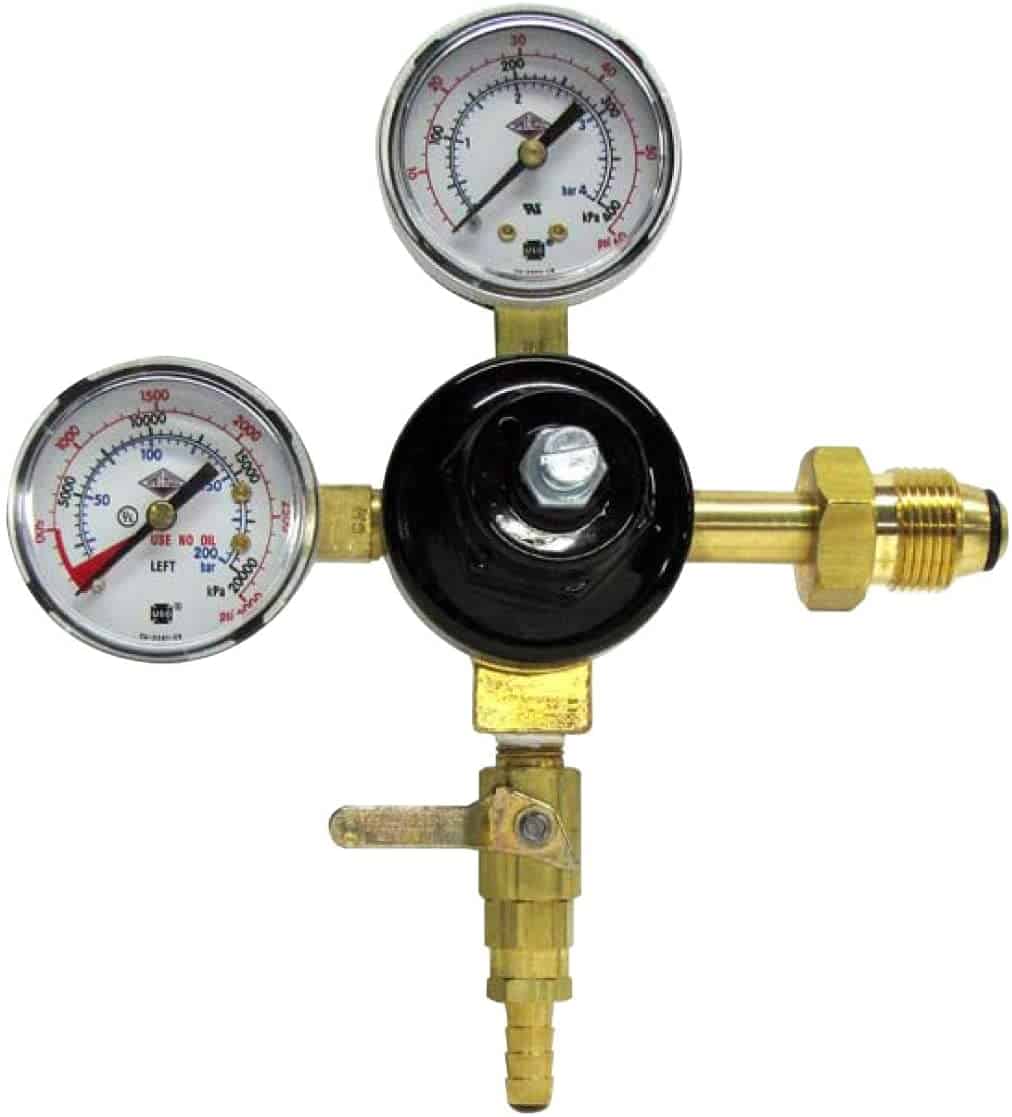
If you have a high-pressure tank that hosts a CGA-580 valve, then you’ve found the right nitrogen regulator for your needs. The regulator is equipped with two gauges to measure the nitrogen volume in the cylinder, as well as the PSI, keeping you informed on everything you need to know to make good beer.
Thanks to the integrated duck-bill check valve, there will be no backflow liquid running into the regulator, thus ensuring a flawless brewing experience once you get the hang of what you’re doing.
Key Specs
- Materials: zinc
- Single/double: double gauge
- Price range: $100 – $200
- Warranty: 1 year
Kegco Nitrogen Regulator

With the Kegco nitrogen regulator, you can serve beer in a commercial or home setup, but you can also serve coffee or wine. The regulator body is made of forged brass, and all of the components and connections are made of brass as well. Pressure may be easily adjusted by hand thanks to the wide adjustment knob.
Using a pressure relief valve that’s tamper-proof and releases at a standard 45 psi, along with a shut off valve, you can rapidly turn off pressure to the keg without causing a back-up in the gas line.
Key Specs
- Materials: brass
- Single/double: double
- Price range: less than $100
- Warranty: 1 year
Kegco Nitrogen Regulator, Mini
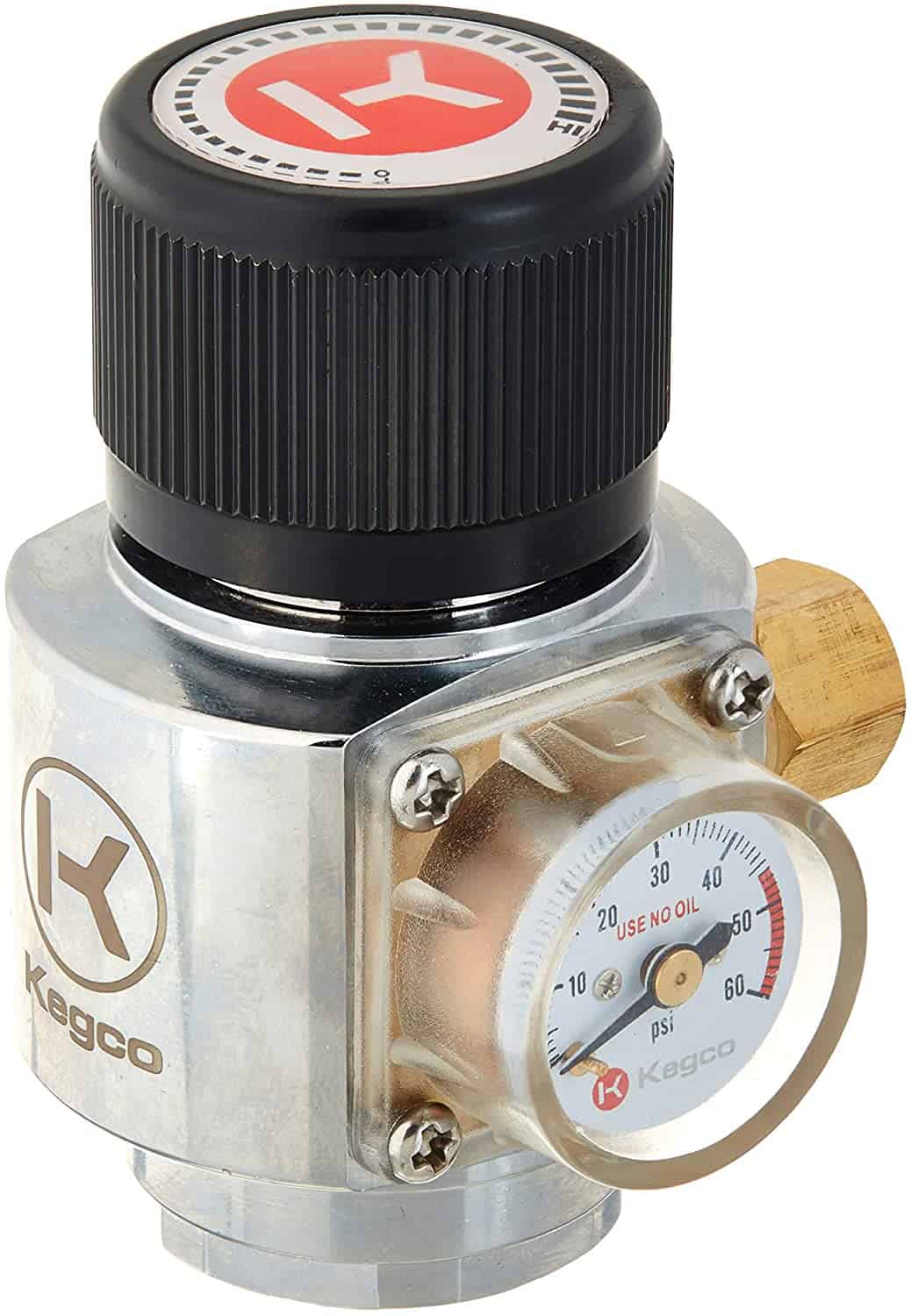
In addition to being compatible with 5/8″ Un-threaded CO2 and nitrogen cartridges, this brass nitrogen regulator features a flared 1/4″ connection on the output that may be used with either a pin or ball lock disconnect.
Key Specs
- Materials: brass
- Single/double: single
- Price range: $100 – $200
- Warranty: 1 year
Taprite Primary Keg Brass Beer Regulator
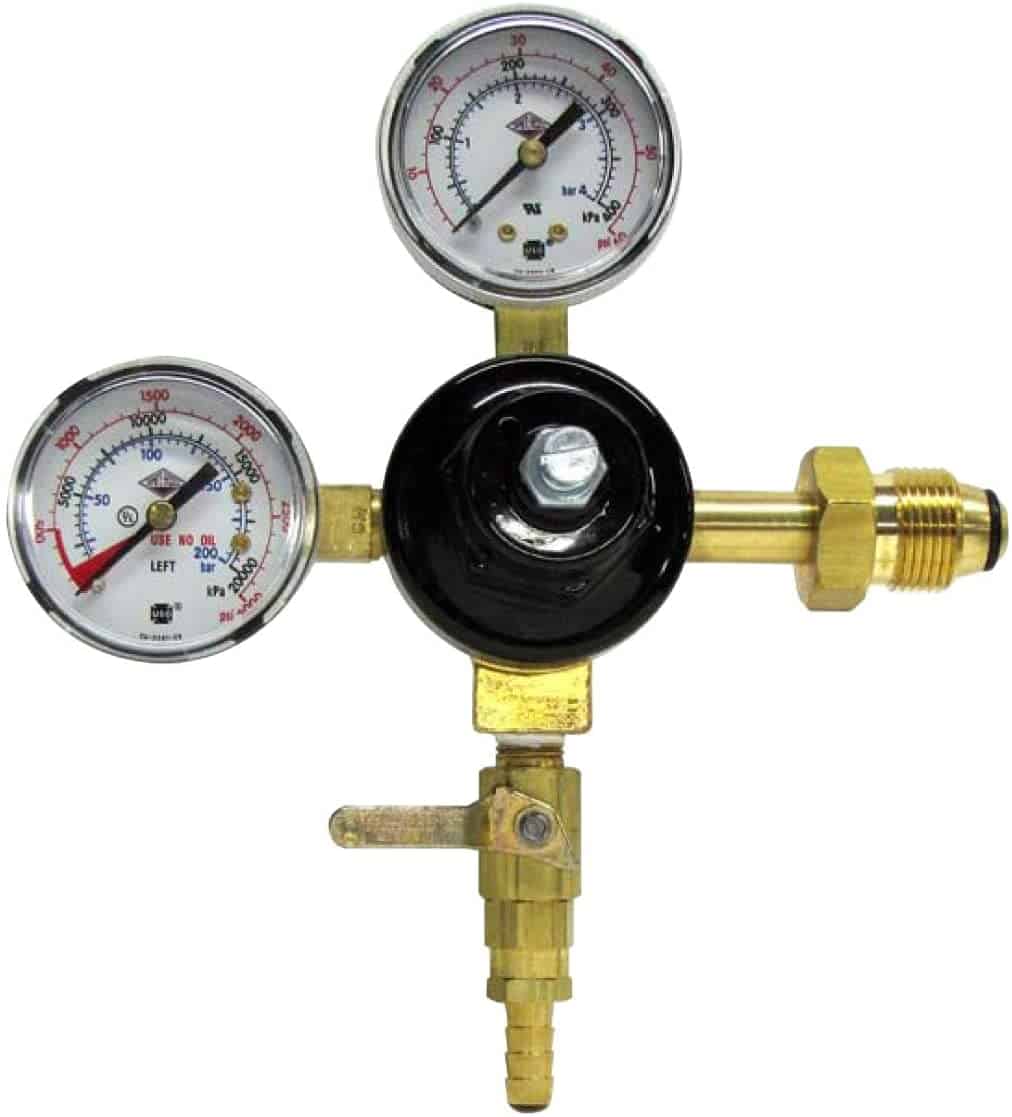
The specifications of this Taprite nitrogen regulator are pretty similar to the model we talked about earlier. That includes all the quality components that are made from brass and zinc, the double gauge regulators, and the duck-bill check valve.
This nitrogen regulator is easy to set up and works like a charm. It can keep gas at steady levels and speeds up the carbonation process with very little effort on your behalf. One downside would be the fact that this model lacks a pressure release valve.
Key Specs
- Materials: brass
- Single/double: double
- Price range: less than $100
- Warranty: 1 year
FAQ
Question: Are all nitrogen regulators the same?
Answer: No, because they are divided into categories such as primary and secondary regulators (for connecting one or multiple kegs to a gas source). Primary regulators can have a single or a double gauge system.
Question: What pressure should the nitrogen regulator be adjusted to?
Answer: Making adjustments to the pressure generated by your nitrogen regulator is a straightforward process that involves fiddling with the front dial to increase or lower pressure. You can adjust your regulator to 6-8 PSI for flat cold brew and 35-45 PSI for nitro coffee.
Question: Can an oxygen regulator be used for nitrogen?
Answer: No. A nitrogen regulator is designed to work at higher pressure and has different characteristics, so it is not interchangeable even with an oxygen regulator.
Bottom Line on Nitrogen Regulators
All of the four regulators we talked about today are excellent, with the Kegco offering everything you might need from such a product and at a very reasonable price. For more information on beer and the equipment needed to make it, make sure to check out some of our other articles. You’ll even find helpful tips on how to brew beer like a delicious Crystal Malt!
References

